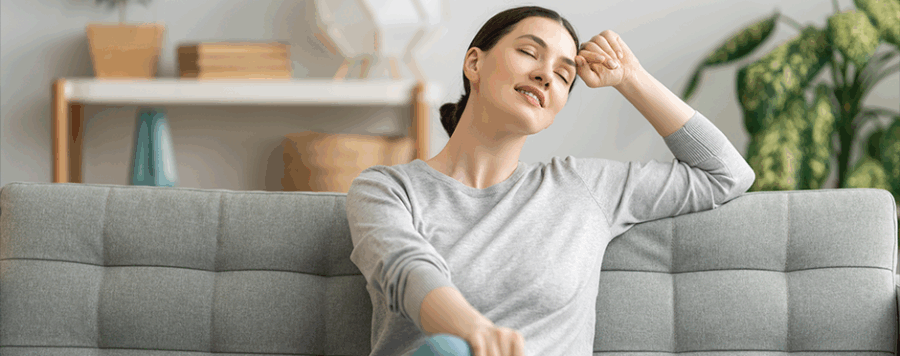But Is All This Due To A Small Bladder?
The bladder, along with the urethra, comprises the lower urinary tract. As the bladder fills with urine, the detrusor muscle that lines the inside of the bladder stretches. When the detrusor muscle stretches, it signals the brain, initiating the urge to go. During urination, nerve signals coordinate the relaxation of the pelvic floor and urinary sphincter muscles while the bladder muscles contract, expelling urine1.
Overactive bladder, marked by increased urgency and frequency, can result from various factors. Without an underlying medical condition, causes may include bladder muscle overactivity and/or pelvic floor dysfunction. In the case of the latter, because of this muscle overactivity and nerve sensitivity, it takes less urine in the bladder to trigger the urge to urinate, causing you to pee more frequently. When you pee before your bladder is full, the detrusor muscle never gets to its full stretch capacity. This, in turn, can cause even more sensitivity, thus creating a vicious cycle and the feeling of a smaller bladder.
What You Can Do To Break The Cycle
Behavior Modifications And Lifestyle Changes
Making simple changes in your daily routine can significantly impact symptoms:
- Stop Smoking: Smoking is identified as a risk factor for urgency and frequency.
- Weight Management: Participants in a recent study showed improvements by losing 5-10% of body weight.
- Caffeine Reduction: A 4-week trial revealed a 55% reduction in urinary leakage, a 61% reduction in urgency, and a 35% reduction in voids per day by reducing caffeine intake by 58%.
- Hydration: Sip water throughout the day to maintain bladder muscle flexibility and dilute bladder sediment.
- Dietary Attention: Some foods may irritate the bladder, so monitor how your symptoms respond to different foods.
Pelvic Floor Muscle Training
If you feel as though your bladder is controlling your life, you may benefit from pelvic floor physical therapy. Your therapist will take the time to review your symptoms and perform a comprehensive evaluation. They will then create an individualized treatment program to suit your needs best.
Bladder Retraining
To break the cycle of urgency, try the following strategies when the urge hits:
- Deep Breathing: Expand your ribs like an umbrella while inhaling, keeping your belly soft.
- Pelvic Floor Contractions: Squeeze and lift the muscles around your anus, then relax. Repeat 5 to 10 times.
- Toe Curls: Curl and hold your toes for 5 seconds, then try to spread them open. Repeat 10 times.
- Glute Contraction: Squeeze your buttocks for 5 seconds, then release. Repeat 5 times. If sitting, push your knees into your hands for 5 seconds, then relax. Repeat 5 times.
- Counting Backwards: Distract yourself by counting backward from 100 by 3’s.
Studies suggest that pelvic floor muscle training, combined with the above recommendations, yields the best outcomes. Based on your initial evaluation, your therapist will design an individualized program. Remember, your healthcare provider is here to support you throughout this journey. If you have questions or concerns, don’t hesitate to reach out.
Find a Pelvic Health Therapist Near You
*Per federal guidelines, beneficiaries of plans such as Medicare, Medicaid, Tricare, VHA and other federally funded plans are not eligible for free assessments.
The Athletico blog is an educational resource written by Athletico employees. Athletico bloggers are licensed professionals who abide by the code of ethics outlined by their respective professional associations. The content published in blog posts represents the opinion of the individual author based on their expertise and experience. The content provided in this blog is for informational purposes only, does not constitute medical advice and should not be relied on for making personal health decisions.
References:
1. McAuley, J. Adrienne PT, DPT, MEd1; Mahoney, Amanda T. PT, DPT2; Austin, Mary M. PT, DPT3. Clinical Practice Guidelines: Rehabilitation Interventions for Urgency Urinary Incontinence, Urinary Urgency, and/or Urinary Frequency in Adult Women. Journal of Women’s & Pelvic Health Physical Therapy 47(4):p 217-236, October/December 2023. | DOI: 10.1097/JWH.0000000000000286
2. Shermadou ES, Rahman S, Leslie SW. Anatomy, Abdomen and Pelvis: Bladder. [Updated 2023 Jul 24]. In: StatPearls [Internet]. Treasure Island (FL): StatPearls Publishing; 2024 Jan-. Available from: https://www.ncbi.nlm.nih.gov/books/NBK531465/

 width="900"
height="356"
>
width="900"
height="356"
>
